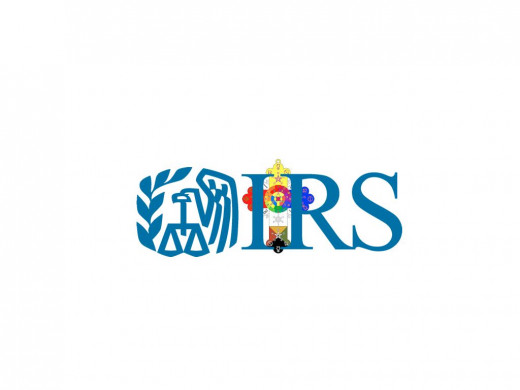Scientology’s Tax-Exempt Status

Pt.1
What does it take to be recognized as a church for tax purposes? It’s hard to say these days, but the tax benefits of being acknowledged as a church is much more advantageous than just being recognized as a tax-exempt organization. Scientology has been recognized, denied, and re-recognized all in the past half-century. The purpose of this paper is to follow the timeline of Scientology’s recognition status and explain the IRS’s reasoning for considering it a charitable and religious organization now.
The primary difference between a for-profit organization and a non-profit organization is what they do with the organization’s excess revenues. A for-profit organization distributes its annual earnings to shareholders or owners of the organization, whereas for-profit organizations (which have no owners) use excess revenues to further the non-profit organization’s activities. One of the major restrictions of a non-profit is that none of its net earnings can inure to the benefit of any private individual or shareholder.[1]
The tax-exempt sector is comprised of four categories of organizations: (1) nonprofit organizations, (2) tax exempt organizations, (3) charitable organizations, and (4) private foundations. Non-profit organizations are the broadest of the four categories, and it includes all the other groups listed. In other words, non-profit organization is the largest category, and each following category is a subgroup of the previous category. A tax-exempt organization is a type of
non-profit organization. Charitable organizations are a type of tax-exempt organization, and private foundations are a type of charitable organization.
The regulatory tax rules get tighter as you go down the list. For example, the rules governing tax exempt organizations are stricter than the rules for non-profits. The rules governing charitable organizations are more demanding than the rules for tax exempt foundations, and the rules governing the private foundations are the harshest of all.
There are several types of tax-exempt organizations, but the major type of tax-exempt organization is the Section 501(c)(3) organization. A tax-exempt organization is nonprofit organization that is not subject to the federal income tax. This exemption from federal income tax applies to charitable, religious, educational organizations, and several others. Specifically the IRS (Internal Revenue Service) exempts these organizations from paying federal income tax on their “exempt function income.”[1]However, each of the above named organizations issubject to Section 511 unrelated business income tax.[2]Private foundations, whichare subject to stricter rules than the 501(c)(3) organizations, are subject to specific private foundation taxes, and are also required to pay a federal excise tax on investment income.[3]
It is clear from this overview why it would be more advantageous for an organization to be considered a 501(c)(3) organization than it would to be recognized as a private foundation. While both churches and religious organizations are both considered Section 501(c)(3) organizations, it is more advantageous to be recognized as a church than a religious organization for tax purposes. Churches are entitled to numerous tax benefits that religious organizations do not receive. So, what makes a church distinguishable form a religious organization?
The courts have attempted to answer this question by focusing on three points. First, the courts interpret Congressional intent for the definition of “churches” to be more restrictively construed than “religious organizations.”[1]Second, “the means by which an avowedly religious purpose is accomplished separates a church from other forms of religious enterprise.”[2]Third, the court looks to the “associational test” and the “14-point test” to distinguish between a religious organization and a church.[3]
The 14-point test was part of a speech given by the IRS Commissioner in 1978, and was later adopted in the federal court’s opinion in American Guidance Foundation v. United States.[4]The 14-point test asks if the organization has a(n): distinct legal existence, recognized creed and form of worship, definite and distinct ecclesiastical government, formal code of doctrine and disciple, distinct religious history, membership not associated with any other church or denomination, organization of ordained ministers, ordained ministers selected after completing prescribed studies, literature of its own, established places of worship, regular congregations, regular religious services, Sunday school for the religious youth instruction, and School for the preparation of its ministers.[5]Most mainstream churches meet all points on the test, but a less traditional ministry will potentially have more trouble meeting even a few of the points listed.
Because of the difficulties of meeting the 14-point test, the Tax Court favors the “associational test” or the “spiritual coherence test.” The spiritual coherence test, first introduced in Church of Eternal Life v. Commissioner, tests whether the organization was a “coherent group
of individuals and families that join together to accomplish the religious purposes of mutually held beliefs.”[1]In American Guidance Foundation, the court held that “at a minimum, a church includes a body of believers or communicants that assembles regularly in order to worship.”[2]
Despite what the courts have concluded, when an organization seeks to qualify as a church by filing a Form 1023, the IRS primarily focuses on the private inurement test.[3]Churches are not obligated to file tax returns or the informational Form 990 that is required of all other 501(c)(3) organizations, but they are required to keep records of the money they receive and how it is spent.[4]According to the IRS, private inurement is “likely to arise where the financial benefit represents a transfer of the organization’s financial resources to an individual solely by virtue of the individual’s relationship with the organization, and without regard to accomplishing exempt purposes.”[5]The purpose of the private inurement rule is to guarantee that the tax exempt organization is serving exempt interests and not private interests. This is where the Church of Scientology ran afoul of the requirements of a § 501(c)(3) organization, and in a 1967 audit,was denied tax exempt status based on private inurement grounds.[6]
Scientology was founded based on the thoughts and writings of Ron Hubbard back in 1955. It originated from an article written by Hubbard in a May 1950 issue of Astounding Science Fictionmagazine, which described a new science called Dianetics.[7]Dianetics was a psychotherapeutic technique created by Hubbard that he presented as a religious discipline.[8]
Dianetics, which later turned into Scientology, employed the use of the Electro-Meter, another Hubbard creation. Scientology has ministers who perform “processing” sessions using the E-meter to indicate changes in electrical resistance in a person’s body and spirit.[1]
The Founding Church of Scientology was organized with a stated purpose in itsCertificate of Incorporation to “act as a parent church for the propagation of the religious faith known as Scientology, and to act as a Church for the religious worship of that Faith.”[2]The opinion explains that:
The beliefs of Scientology center around the spirit or ‘thetan,’ which is said to reside within the physical body of every human being. Scientologist believe that the spirit is immortal and that it receives a new body upon death of the body in which it resides. They also believe that in the course of its various lives, the spirit is inhibited by ‘detrimental aberrations,’ or ‘engrams,’ which result from misdeeds or unpleasant experiences. The objective of Scientology is to counteract this burden through processing,’ also called ‘auditing.’ This objective which is the principal practice of Scientology, attempts to make the person being audited, called a ‘preclear,’ aware of these aberrations and engrams and thus reduce the burdens and inhibitions affecting his spirit. Processing is performed by ministers of the church, or persons studying to become ministers, and is done in individual sessions with an auditor processing a single preclear through the use of a Hubbard Electro-Meter or E-Meter. The E-Meter is an instrument which indicates changes in electrical resistance in the preclear’s body, and changes in such resistance are viewed as an index of the activity of the spirit.[3]
To engage in the practice of ‘auditing’ or ‘processing’ by way of the E-Meter, people have to sign a contract stating the amount of auditing. A typical contract allows for 25 hours of processing at a rate of $20 per hour. There are also E-Meter training programs that a person can pay to attend to become qualified to administer the ‘auditing’ sessions at comparable rates. The sales from the processing and training made up more than 90% of the church’s income.
Additional income was earned from the sales of examination and tests, tapes, books, and donations. In 1958, gross receipts were $179,491and $247,674 in 1959.
The issue raised by the IRS was that Hubbard’s control of the church, which he used for his own personal benefit, constituted impermissible private inurement.[1]Hubbard was taking a straight commission on all the “processing” and “training” sessions. Additionally, he was receiving royalty payments and setting the prices for the church’s sale of his literature. He also was reported to having received undocumented loans for himself and family members and was reimbursement for personal expenditures using the church funds.[2]The court found that where the overlap of control and benefit of those who control an organization and those who benefit from it is was so obvious, as in this case, that private inurement couldn’t be any moreblatant.
Hubbard, disagreeing with the church’s non-exempt status, made it his life’s mission to regain the church’s exemption. He ignored the agency’s action, because he deemed it unlawful, and withheld taxes. In 1967, the year of the loss, Hubbard implemented the “fair game” policy. This unambiguous directive from the church’s founder authorizes church members to employ whatever means necessary to subdue enemies of the church. [3]Under this policy, anyone who attacks the church may be justifiably lied to, harassed, tricked, or destroyed. Hubbard expressed that harassment and annoyance were the primary purposes of litigation in the twenty-five-year war against the IRS, litigation would prove to be the church’s most effective weapon.[4]The church was able to afford a downpour of litigation against the IRS brought on by its several
attorneys, many of whom were Scientologists. Additionally, the church reportedly hired private investigators to harass IRS employees and smear their reputations.[1]
It didn’t end there. In 1979, Hubbard’s wife and ten other upper-level Church officers were convicted and sentenced to prison terms for acts of conspiracy to burglarize government offices and steal documents, conspiracy to obstruct justice, and theft of government property in connection with an attempt to steal files the IRS had on the church.[2]Coined as “Operation Snow White,” this was the largest infiltration of the United States government in history. There were nearly 5,000 covert agents involved in this project which included a series of infiltrations and thieveries from 136 government agencies, private organizations, and foreign embassies and consulates, in more than 30 countries. Although Hubbard died in 1986, his opposition to the IRS lived on through a new generation of church leaders.
Scientology created and financed the National Coalition of IRS Whistle-Blowers, which played a role in the public battle for nearly a decade.[3]The church justified its retaliation against the IRS, claiming that the IRS had put the church on its hit list and engaged in a campaign to shut it down.[4]In 1989, the coalition helped initiate Congressional hearings that accused IRS officials of wrongdoing.[5]With the use of leaked IRS documents and public records, the coalition was able to prove that a Los Angeles supervisor and other employees had committed wrongdoing.[6]
[1]Douglas Frantz, Taxes and Tactics: Behind an I.R.S. Reversal –A Special Report: Scientology’s Puzzling Journey from Tax Rebel to Tax Exempt, N.Y. Times, Mar. 9, 1997 § 1 at 1.
[2]United States v. Hubbard, 493 F. Supp. 209, 216 (D.D.C. 1979).
[3]Frantz, Puzzling Journey.
[4]Id.
[5]Id.
[6]Id.
[1]Idat 1202.
[2]Idat 1200-01.
[3]William W. Horne, The Two Faces of Scientology, Am. Law., July 1992, at 74.
[4]Id.
[1]Idat 1198.
[2]Id.
[3]Id.
[1]Church of Eternal Life v. Commissioner, 86 T.C. 916, 924 (1986).
[2]490 F. Supp. 304, 306 (D.D.C. 1980).
[3]Synanon Church v. United States, 820 F.2d 421 (D.C. Cir. 1987).
[4]26 C.F.R. § 1.6033-2(i).
[5]General Counsel Memorandum 38459, July 31, 1980.
[6]Founding Church of Scientology v. United States, 412 F.2d 1197, 1201 (Ct. Cl. 1969)
[7]Idat 1199.
[8]Id.
[1]Chapman v. Commissioner, 48 T.C. 358, 363 (1967) (“Every religious organization is not per se a church.”
[2]United States v. Jeffries, 854 F.2d 254, 258 (7th Cir. 1988)
[3]Foundation of Human Understanding v. United States, 614 F.3d 1383 (Fed. Cir. 2010).
[4]American Guidance Foundation, 490 F. Supp. 304, 307 (D.D.C. 1980).
[5]Id.
[1]I.R.C. § 512.
[2]I.R.C. § § 512-514.
[3]I.R.C. § 4940, I.R.C. § § 4941-4945
[1]I.R.C. §512.
Pt.2
In United States v. Church of Scientology of Boston, the court affirmed the district court’s ruling that the IRS had issued “unnecessary” summonses for the church’s records regarding tax liability in 1985, 1986, and 1987, and did so with an improper purpose.[1]Some of the tactics used by the IRS to access the church records, were cited by the judges as abusive practices.[2]At one point, Scientology had more than 50 suits pending simultaneously against the IRS.[3]The church and several members that the church helped, brought nearly 2,200 lawsuits against the agency and its officials over the twenty-five-year span. The church alleged that it was a victim of a campaign of discrimination and harassment by rouge agentswithin the IRS.[4]Monique E. Yingling, a lawyer for Scientology, expressed that, “This church is an organization that has been subjected to more harassment and attacks certainly than any religion in this century and probably any religion ever, and they have had to perhaps take unusual steps in order to survive.”[5]
Then something unusual happened. In 1991, David Miscavige, a second-generation Scientologist and recognized leader of the Church of Scientology, managed to get an unscheduled meeting with Fred T. Goldberg Jr., the Commissioner of the IRS at the time.[6]The two struck up a deal in which Mr. Miscavige agreed to dismiss all of Scientology’s suits against the IRS in exchange for tax exempt status.[7]Shortly thereafter, a five-person negotiating group was appointed by Mr. Goldberg in order to reach a settlement with the church. John E. Burke, the assistant commissioner for exempt organizations, agreed that only a portion of the
information the church provided to the IRS would become public “in the event that our discussions break down, an eventuality that I have no reason to believe will occur.”[1]
In October 1993, an agreement was reached (known as an IRS closing agreement) and the agency announced tax exemptions for nearly 150 Scientology entities, ending the twenty-five-year battle with the church.[2]The IRS refused to discuss its legal reasoning behind its decision, nor would it make public any terms of the agreement, including whether or not the church was required to pay any back taxes.[3]
An unidentified IRS official stated that, “Ultimately the decision was made on a legal basis. I’m not saying Scientology wasn’t taking up a lot of resources, but the decision was made on a legal basis.”[4]He claimed that the church had pacified the IRS in three major areas. According to him, the agency was convinced that those involved in “Operation Snow White” had been purged, the income from the church was devoted to tax-exempt purposes, and with Mr. Hubbard now deceased, no one was getting rich from Scientology.[5]
The church officials and lawyers also asserted that the exemptions had been awarded solely on the merits.[6]Ms. Yingling, one of the church’s lawyers, maintained that nothing substantive had changed and that the church had qualified for tax exempt status all along. She argued that it was the biased elements within the IRS that stood in the way of the church’s tax exemption. She asserted, “There were no changes in the operations or activities of the church. What came about was finally that they looked at all the information and saw that the church qualified for exemption, and they were satisfied.”[7]
A 1994 article in the International Scientology Newssaid, “The public exposure of criminals within the IRS had the desired effect. The Church of Scientology became known across the country as the only group willing to take on the IRS.” It went on to say, “And the IRS knew it. It became obvious to them that we weren’t about to fold up or fade away. Our attack was impinging on their resources in a major way and our exposes of their crimes were beginning to have serious political reverberations.” The article continued, “It was becoming a costly war of attrition, with no clear-cut winner in sight.”
So, what exactly led the IRS to change course in the position it had maintained for twenty-five years against the church that it was not worthy of tax exemption, and that it was merely a commercial enterprise? It certainly wasn’t swayed by the Untied States Court of Claims decision that was handed down in June of 1992, midway through the two-year negotiations that led to the closing agreement.
In Church of Spiritual Technology v. United States, the court denied exempt status to the Church of Spiritual Technology, a byproduct of Hubbard’s estate planning that was incorporated to to create and maintain an archive of scriptures for future generations.[8]The stated purpose of the organization is to “espouse, present, propagate, practice, ensure, and maintain the purity and integrity of the religion of Scientology.”[9]All of its funding, including a “one-time start-up grant” of $17, 959,745 and annual grants ranging from $623,000 to $2.8 million come exclusively from the Church of Scientology.[10]The court reasoned that “the commercial character of much of Scientology,” its “scripturally based hostility to taxation” and its “virtually incomprehensible financial procedures” rationalized their decision to deny it exempt status.[11]
Throughout the twenty-five-year battle and leading up to the reversal of Scientology’s exempt status, the courts supported the agency’s views. In Church of Scientology of California v. Commissioner, the court revoked the church’s tax exemption based on the grounds that the organization operated for a” substantial commercial purpose,” its earnings “inured to the benefit of Hubbard” and it violated, “well defined standards of public policy by conspiring to prevent the IRS from assessing and collecting taxes owed by the church.”[12]
In Hernandez v. Commissioner, where the Supreme Court decided whether taxpayers could deduct payments for “auditing” and “training” made to the Church of Scientology, it found that the payments did not qualify as contributions or gifts but were rather part of a “quintessential quid pro quo exchange: In exchange for their money, petitioners received an identifiable benefit, namely, auditing and training sessions.”[13]
The direct contradiction between the court’s views and agency’s views on the church’s exempt status had several people dying to see the details of the IRS closing agreement. The Tax Analysts, a pubic interestgroup, submitted a FOIA (Freedom of Information Act) to obtain the exemption agreement. When their request was denied, they filed suit. In Tax Analysts v. IRS, the court ordered the IRS to release to the Tax Analysts FSAs (Field Service Advice Memorandums) prepared by the IRS Office of Chief Counsel.[14]Less than a year later the entire seventy-six page closing agreement was leaked to the Wall Street Journal, which they promptly posted to their website. The IRS conducted an internal inquiry into how the agreement was leaked, but no accused participants have been named or charged.
The details of the closing agreement may have revealed why the IRS went against its previous stance on the church’s non-exempt qualifications.[15] The agreement disclosed that the church agreed to more Federal Government intrusion than what is normally (and perhaps has ever been) allowed for religious organizations.[16]
The church agreed to formulating an oversight committee, called the Church Tax Compliance Committee, which would monitor its compliance with tax laws and report annually to the IRS for three years about how much the church paid its 20 top-compensated officials, as well as the finances of 23 member churches, businesses, and organizations.[17]The penalty for failing to report could result in penalties of as much as $75,000 for each committee member.[18]They also agreed to the imposition of penalties, as much as, $50 million on specific church organizations if they repeatedly spent more money on non-charitable purposes, or enriching themselves from the time of the agreement until the end of 1999.[19]
In return for its exemption status, the church agreed to drop thousands of lawsuits against the agency and to stop assisting others in lawsuits against the IRS based on claims arising before the October 1, 1993 settlement date.[20]Additionally, the church paid a reported $12.5 million in exchange for the discharge an estimated $1 billion tax bill (the agreement doesn’t specify the exact amount).[21]
The IRS agreed to stop its audits of 13 major Scientology organizations and dismiss all tax penalties against some of the church organizations.[22]In the exchange, the tax agency agreed to grant tax-exempt status to 114 Scientology-related entities in the United States.[23]This recognition proved to be an instrumental public relations device to aid in the church’s universal campaign for religious recognition.[24]
The Church of Scientology is worth an estimated $1.75 billion.[25]It boasts a staggering fifteen million members, all of whom believe that spirits disguised as humans were trapped in ice and banished to Earth seventy-five million years ago by Xenu, the ruler of the twenty-six planet Galactic Confederation.[26]Their goal is described as “a civilization without insanity, without criminals, and without war, where the able can prosper and honest beings can have rights, where Man is free to rise to greater heights.”[27]As a result of the IRS closing agreement, and because nearly all states and local laws have exempted nonprofits from property and income tax since 1917, the organization now saves an approximate $7.82 million in income tax, and an estimated $20 million in property taxes each year.[28]Critics of the church have called for its tax exemption to be revoked, but for now, the IRS stands firm in its decision to classify Scientology as a charitable and religious organization, and insists that it will have no bearing on the standards for determining how any other institution is to be considered religious for tax purposes.
[1]Id.
[2]Id.
[3]Id.
[4]Id.
[5]Id.
[6]Frantz, Puzzling Journey.
[7]Id.
[8]Church of Spiritual Tech v. Untied States, 26 Cl. Ct. 713, 720 (1992) aff’d, 991 F.2d 812 (Fed Cir. 1993).
[9]Idat 721.
[10]Id.
[11]Id.
[12]Church of Scientology of California v. C.I.R., 823 F.2d 1310, 1313 (9th Cir. 1987)
[13]Hernandez v. C.I.R., 109 S. Ct. 2136, 2144-45 (1989).
[14]Tax Analysts v. IRS, 117 F.3d 607, 620 (D.C. Cir. 1997).
[15]IRS Closing Agreement between IRS and Church of Scientology, 19 Exempt Org. Tax Rev. 227 (1998).
[16]Id.
[17]Id.
[18]Id.
[19]Id.
[20]Id.
[21]Id.
[22]Id.
[23]Id.
[24]Douglas Franz, $12.5 Million Deal with IRS Lifted Cloud Over Scientologists, N.Y. Times, Dec. 31, 1997.
[25]Chris Matthews, How Much Does Scientology Pocket From its Tax-Exempt Status? Forbes, Apr.8, 2015.
[26]Frantz, Puzzling Journey.
[27]Id.
[28]Matthews, How Much.
[1]United States v. Church of Scientology of Boston, Inc.,933 F.2d 1074, 1075 (1st Cir. 1991).
[2]Frantz, Puzzling Journey.
[3]Id.
[4]Id.
[5]Id.
[6]Frantz, Puzzling Journey.
[7]Id.
© 2019 Rob Borrow








